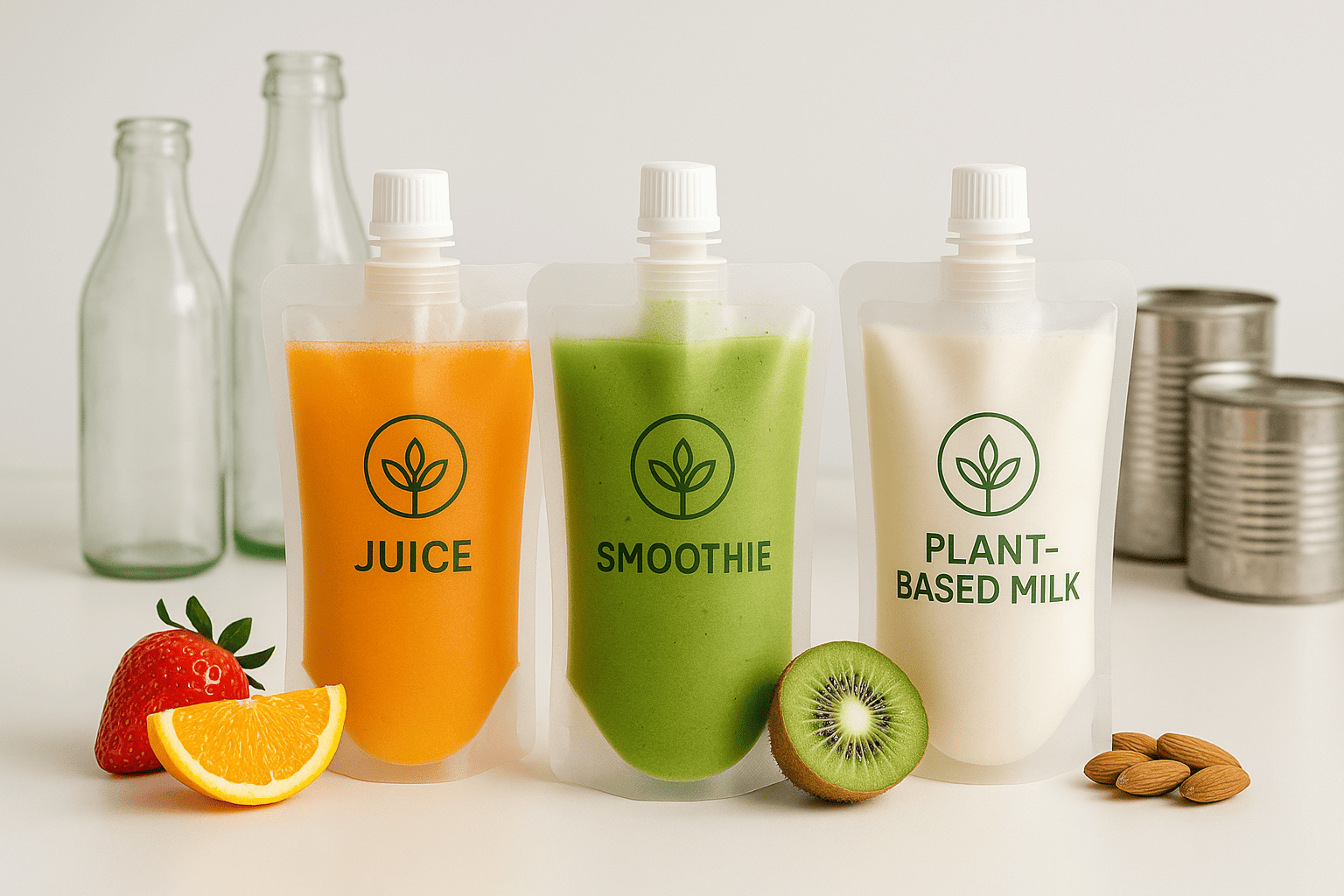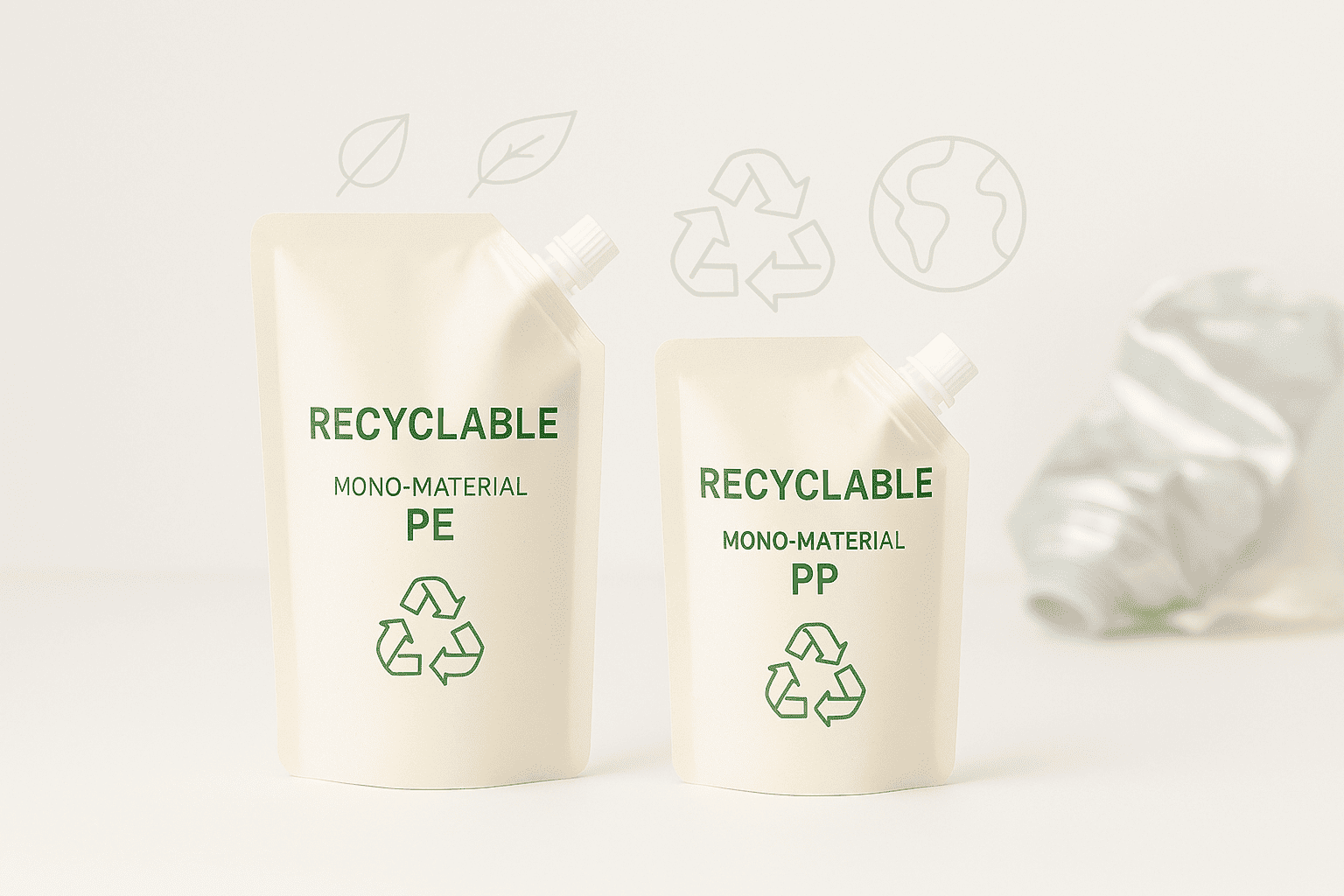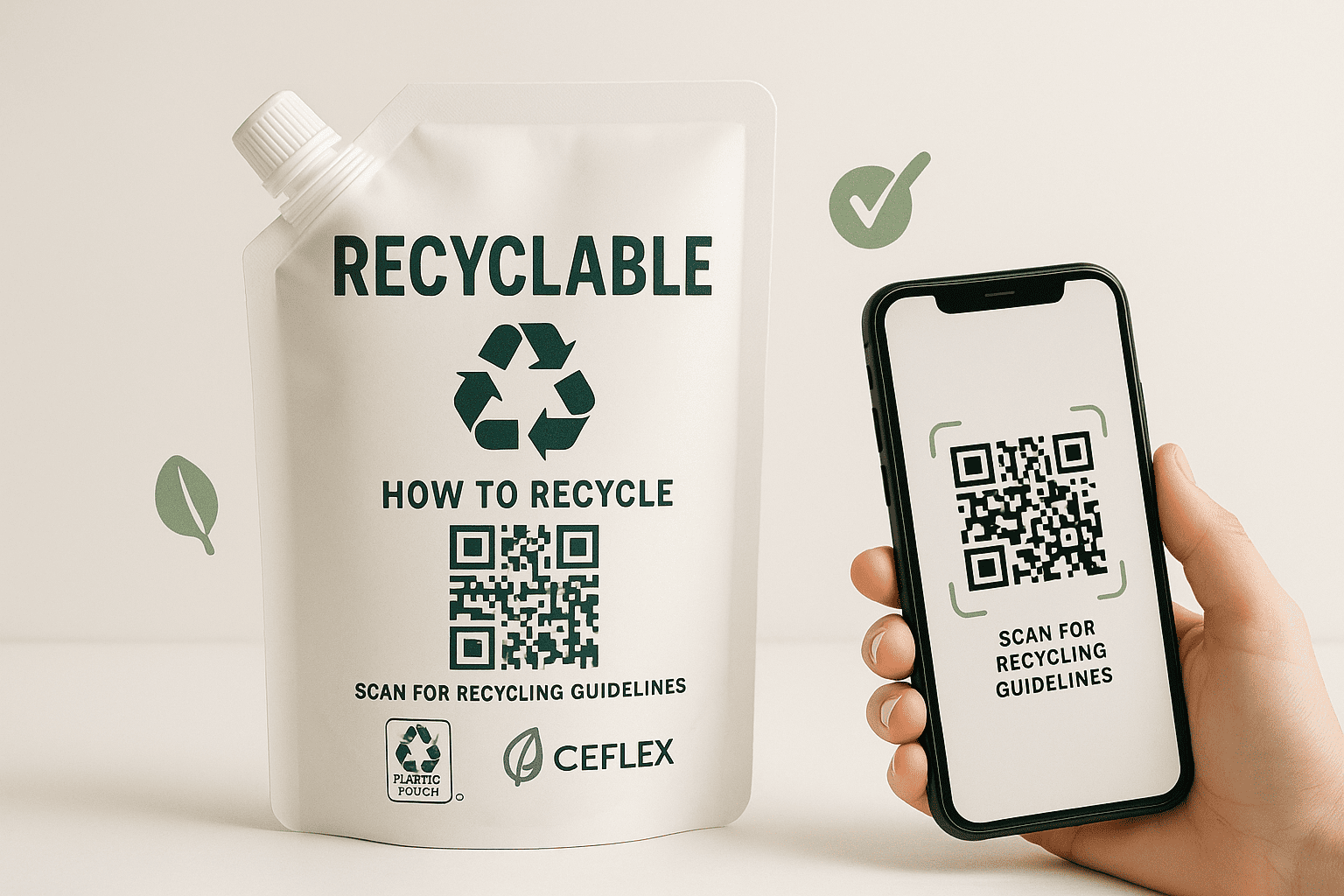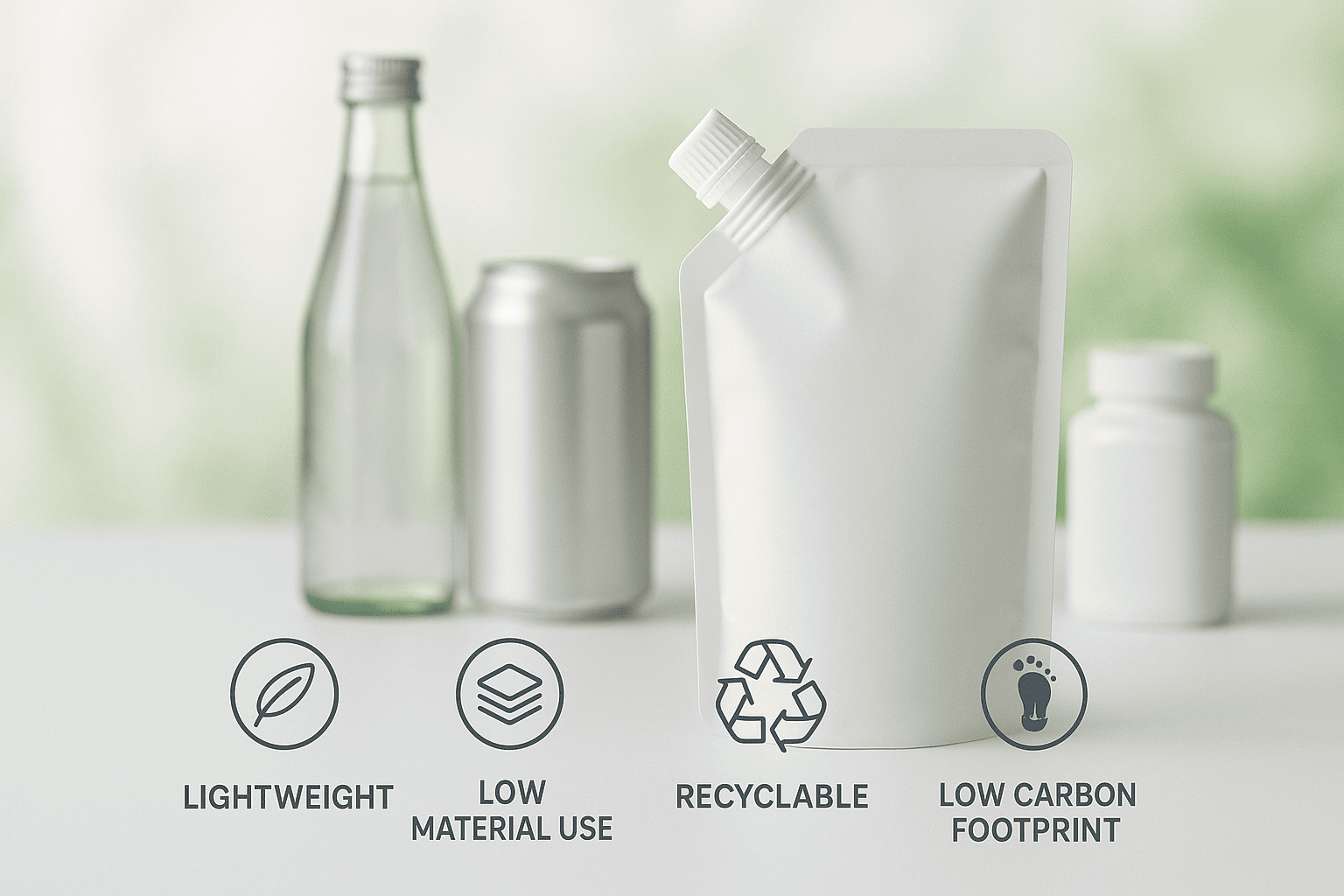Food and beverage brands are all looking for packaging that is lighter, greener, and easier to ship. If you don’t move with this trend, you’re out of the game.
Spout pouches are becoming the go-to packaging choice for food and beverage brands because they are lightweight, environmentally friendly, and fit the demands of modern consumers.

Old packaging like glass bottles and metal cans are heavy, bulky, and expensive to ship. Many juice brands, baby food companies, and even plant-based milk startups have already made the switch to spout pouches. For example, organic smoothie brands now often use spout pouches to offer grab-and-go options, while children’s nutrition products rely on the resealable design to make feeding safer and cleaner. These real-world shifts show that brands are finding success by adapting to lighter, greener packaging formats.
As environmental regulations get stricter, companies need solutions that use less material and leave a smaller carbon footprint.
Are Spout Pouches Recyclable?
Many people think spout pouches are not eco-friendly. They often confuse them with older types of flexible packaging that were hard to recycle. This is a big misunderstanding that needs to be cleared up.
Today’s spout pouches can be made from recyclable materials1 like mono-material PE or PP, offering a much lower carbon footprint than traditional bottles or cans.

In the past, spout pouches were usually made by layering several different materials together — like PET, aluminum foil, and PE. This gave them great protection but made them almost impossible to recycle. Things have changed a lot. Now, many factories can make spout pouches using just one type of plastic, like all-PE or all-PP structures. These newer designs can be recycled much more easily, especially in places like Europe and North America where recycling programs are more developed.
When we look at the entire life cycle — from production to shipping to disposal — spout pouches still create a much smaller carbon footprint compared to glass bottles, aluminum cans, or rigid plastic jugs. They use fewer resources, take up less space in transport, and weigh a lot less, which saves on fuel and emissions. This makes modern spout pouches one of the smarter choices for brands that care about sustainability.
Brands that adopt recyclable spout pouches are also taking extra steps to educate their customers. Many companies now print simple recycling instructions directly on the pouch, or use QR codes that link to recycling guidelines. Some even join recycling partnerships or industry programs like the How2Recycle® label in North America or CEFLEX in Europe. Adding these messages not only helps consumers recycle correctly but also strengthens the brand’s image as an environmental leader.

What are Spout Pouches Made of?
When I first started working with spout pouches2, I was surprised by how many different material structures were possible. Each has its own pros and cons.
Spout pouches are usually made from a combination of plastic films such as PET, PE, and sometimes aluminum, but newer versions use recyclable single materials like PE/EVOH/PE structures.
Common Materials Used in Spout Pouches
| Material | Function | Recyclability |
|---|---|---|
| PET/AL/PE | High barrier, protection from light and air | Difficult |
| PET/PE | Moderate barrier, lightweight | Difficult |
| All-PE (with EVOH) | Good barrier, recyclable | Easy |
| PP-based structures | Heat resistance, recyclable | Easy |
Today, many brands are moving towards using mono-materials. For example, a PE spout pouch with an EVOH layer for gas barrier gives enough shelf life for products like juice or plant-based milk.
EVOH, short for ethylene vinyl alcohol, is a special material that works like an invisible shield. It blocks gases like oxygen from entering the pouch, which helps keep food and drinks fresh for longer. Even though the EVOH layer is very thin, it has a powerful effect on shelf life without adding much weight or thickness to the pouch. This smart use of material is one reason spout pouches can protect products so well while staying lightweight and flexible.
At the same time, it can be collected and recycled much more easily. The key is to balance the need for protection with the need for recyclability.
What is the Most Sustainable Packaging for Liquids?
Brands in the organic, health, and eco markets know that sustainability is no longer just a nice idea. Consumers expect it. They choose products that match their values.
The most sustainable packaging3 for liquids is lightweight, uses the least material possible, is easy to recycle, and reduces transport impact — spout pouches meet all these needs.

When picking packaging for liquids, you have to think about more than just appearance. Glass bottles are heavy and fragile. Aluminum cans require a lot of energy to make. Rigid plastic containers take up space and add weight to shipping. Spout pouches, on the other hand, are much lighter and pack flat when empty, which saves big on storage and transport.
According to industry studies, spout pouches can reduce the overall carbon footprint of packaging by up to 60-70% compared to traditional rigid packaging like glass bottles and aluminum cans. This is because pouches use less raw material, require less energy during production, and allow more efficient transportation. A single truckload of empty spout pouches can replace multiple truckloads of empty bottles, cutting fuel use and emissions dramatically.
A single truck can move a lot more spout pouches than bottles, cutting down fuel use and emissions. Plus, today’s spout pouches can be made from mono-materials like all-PE, making recycling much simpler. Consumers also love the resealable spout design, which makes them easy to use, carry, and store. In every way, spout pouches are a smart move for brands that want real sustainability without losing convenience.
What are the Factors Considered in Choosing an Appropriate Food Packaging Material?
In my experience, choosing the right packaging isn’t just about cost or appearance. It’s a strategic decision that affects the whole product journey.
Important factors include barrier performance, recyclability, ease of use, brand differentiation, compliance with regulations, and protection during shipping.
Key Factors in Food Packaging Material Selection
| Factor | Why It Matters | Example |
|---|---|---|
| Barrier Performance | Keeps food fresh, blocks oxygen/moisture | EVOH layer for plant-based milk |
| Recyclability | Meets environmental goals and regulations | Mono-material PE pouches |
| Ease of Use | Consumer convenience and satisfaction | Resealable spout for baby food |
| Brand Differentiation | Stands out on crowded shelves | Matte finish, special printing |
| Compliance | Necessary for export to markets like EU/US | Certifications for recyclability |
| Logistics Efficiency | Saves shipping and storage costs | Flat empty pouches vs bulky bottles |
Besides these technical factors, the way a package feels in the consumer’s hand also matters a lot. Spout pouches are soft, flexible, and easy to squeeze, which makes them especially popular for products like baby food, health drinks, and sports nutrition. Compared to hard, rigid containers, a flexible pouch feels lighter, more user-friendly, and even a little more premium when designed well. Good in-hand experience builds a stronger emotional connection between the customer and the brand.
If the packaging leaks, breaks, or doesn’t protect the product well enough, customers lose trust fast. Worse, if it doesn’t meet recyclability or regulatory standards in places like the EU or the US, you might not even be able to sell it. That’s why selecting the right structure and design for your spout pouch is critical from day one.
Conclusion
Spout pouches offer a smarter, greener, and more flexible solution for today’s food and beverage brands looking to meet modern needs and sustainability goals.
If you are thinking about how to make your brand stand out and stay ahead in a changing market, now is the best time to rethink your packaging strategy. Choosing smarter packaging like spout pouches is not just a trend — it’s a smart investment in your brand’s future.
-
Learn about the latest advancements in recyclable materials and how they contribute to sustainable packaging solutions. ↩
-
Explore the advantages of spout pouches, including their lightweight design and eco-friendliness, to enhance your packaging strategy. ↩
-
Discover the most sustainable packaging options for liquids and how they can reduce your brand’s carbon footprint. ↩

